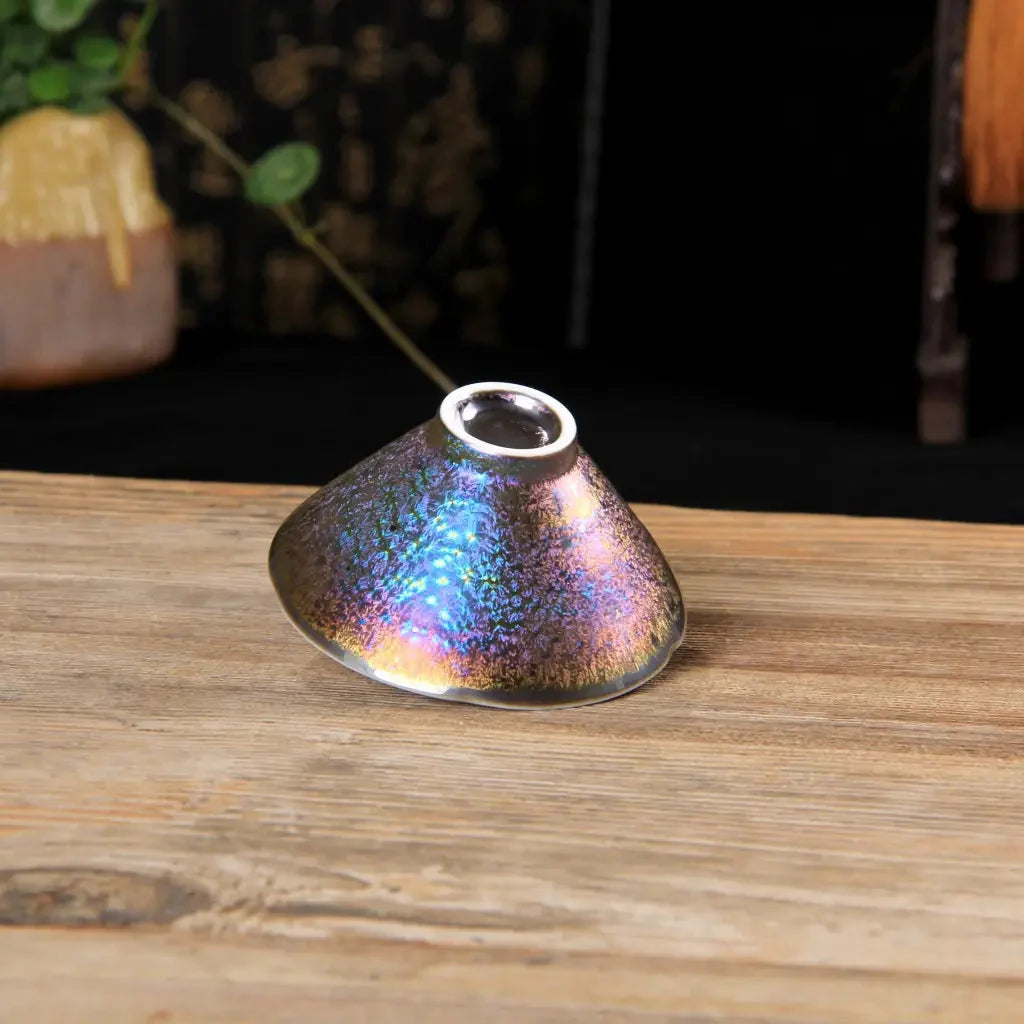Translation: Is Tenmoku poisonous?
That is definitely not the case, but I don't know if "cheap Tenmoku" is toxic. First, we need to understand the raw materials used in making Tenmoku.
The raw materials for making Tenmoku glaze are very simple, basically consisting of two types: glaze minerals and plant ash. Other materials include quartz, feldspar, limestone, etc.
The ceramic glaze is composed of three parts: glaze base, coloring agent, and flux.
- Quartz is used as the foundation for the glaze base, glaze minerals are used as coloring agents, and plant ash is used as a flux.
Glaze base quartz: It is actually a component with a glassy texture, probably something like quartz, which is silicon dioxide.
Glaze mineral coloring agent: The chemical components in the coloring agent determine the color of the porcelain. For example, cobalt oxide is used to produce blue color, copper oxide is used to produce green color, and iron oxide, which produces a reddish-brown color, is the main coloring agent used in Tenmoku.
The minerals used in the glaze are sourced from the Nanshan mountains in Jianyang. This type of mineral is the most important key coloring agent in Tenmoku glaze, and it is the most crucial factor in determining whether Tenmoku can form patterns.
Lime glaze with a high iron content is Jian kiln black glaze, which is a type of iron crystal glaze.
So what is a crystal glaze?
When the temperature reaches a certain level, the glaze will crystallize, forming beautiful visible crystal flowers on the surface or inside of the glaze.
There are several types of crystals that can precipitate from glaze at high temperatures. For example, the brown hare's fur pattern, silver drop pattern, and partridge spot pattern that appear on Tenmoku are all examples of this.
The reddish-brown crystal flowers are composed of hematite, which is a crystalline substance of Fe2O3. Magnetite, which is Fe3O4, is the crystalline substance that forms silver spots.
Flux: It can lower the melting point of quartz, saving a lot of fuel and time. Flux materials such as feldspar, plant ash, or barium are used.
Tenmoku black glaze is a lime glaze that uses calcium oxide as a flux.
Regarding whether Tenmoku is toxic, from the perspective of heavy metal precipitation, it requires a temperature of 1300°C for the flux material to precipitate. The highest temperature of boiling water is 100°C, so there is no need to worry about heavy metals such as lead dissolving when drinking water or tea. Please feel free to use it.









Share:
Tenmoku- Yang Min's Science and Art
Tenmoku Teacups: Don't Believe These Rumors for Proper Understanding